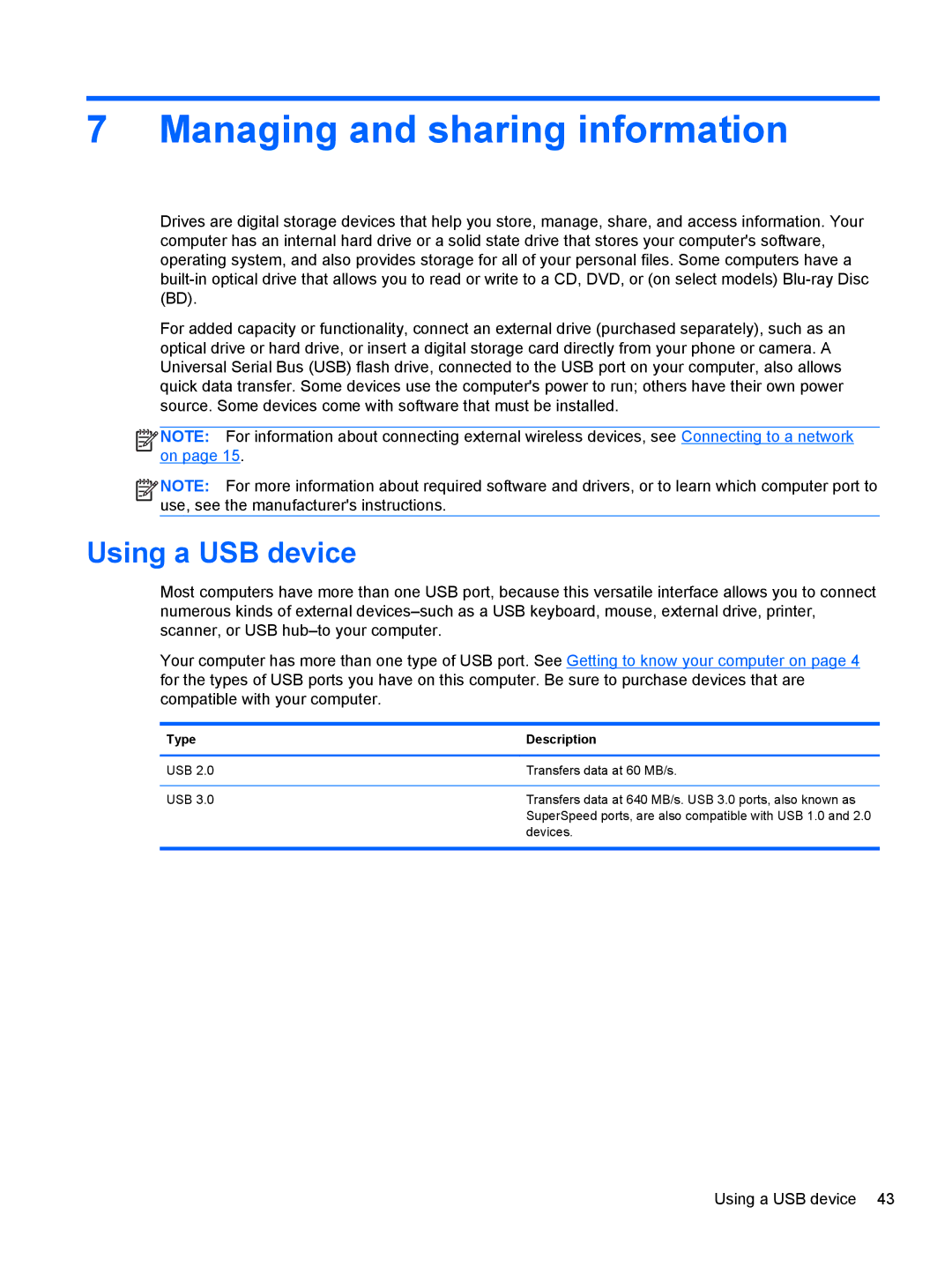
7 Managing and sharing information
Drives are digital storage devices that help you store, manage, share, and access information. Your computer has an internal hard drive or a solid state drive that stores your computer's software, operating system, and also provides storage for all of your personal files. Some computers have a
For added capacity or functionality, connect an external drive (purchased separately), such as an optical drive or hard drive, or insert a digital storage card directly from your phone or camera. A Universal Serial Bus (USB) flash drive, connected to the USB port on your computer, also allows quick data transfer. Some devices use the computer's power to run; others have their own power source. Some devices come with software that must be installed.
![]()
![]()
![]()
![]() NOTE: For information about connecting external wireless devices, see Connecting to a network on page 15.
NOTE: For information about connecting external wireless devices, see Connecting to a network on page 15.
![]()
![]()
![]()
![]() NOTE: For more information about required software and drivers, or to learn which computer port to use, see the manufacturer's instructions.
NOTE: For more information about required software and drivers, or to learn which computer port to use, see the manufacturer's instructions.
Using a USB device
Most computers have more than one USB port, because this versatile interface allows you to connect numerous kinds of external
Your computer has more than one type of USB port. See Getting to know your computer on page 4 for the types of USB ports you have on this computer. Be sure to purchase devices that are compatible with your computer.
Type | Description |
|
|
USB 2.0 | Transfers data at 60 MB/s. |
|
|
USB 3.0 | Transfers data at 640 MB/s. USB 3.0 ports, also known as |
| SuperSpeed ports, are also compatible with USB 1.0 and 2.0 |
| devices. |
|
|
Using a USB device 43
